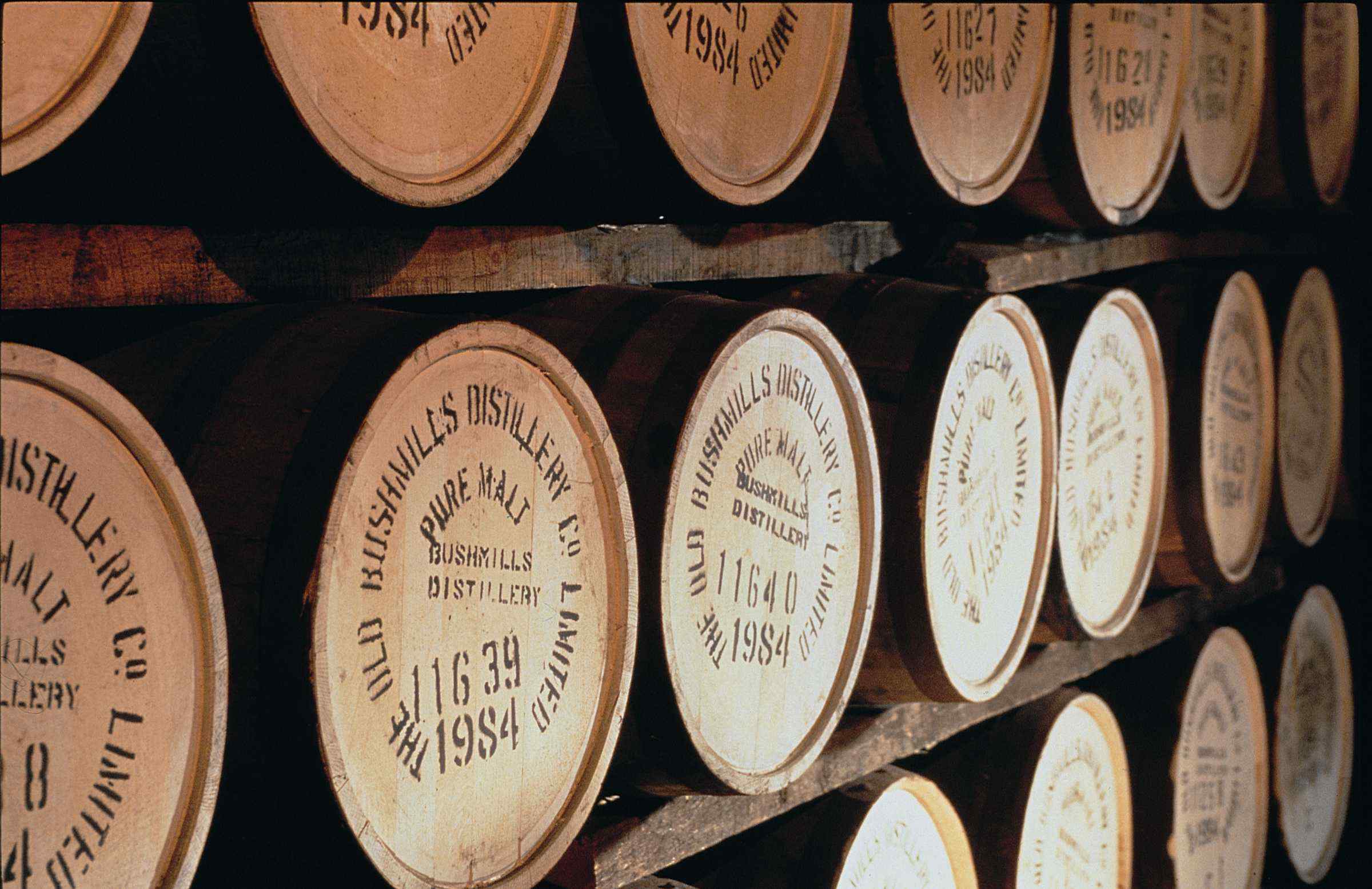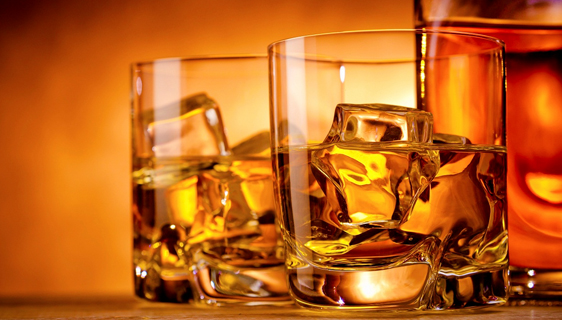Whisky is a distilled spirit made from cereal grains, yeast, and water, then matured in oak casks.
Whisky is a strictly regulated spirit worldwide with many classes and types. The typical unifying characteristics of the different classes and types are the fermentation of grains, distillation, and aging in wooden barrels. Whiskies do not mature in the bottle, only in the cask, so the “age” of a whisky is only the time between distillation and bottling. This reflects how much the cask has interacted with the whisky, changing its chemical makeup and taste. Whiskies that have been bottled for many years may have a rarity value, but are not “older” and not necessarily “better” than a more recent whisky that matured in wood for a similar time.
When people think about whisky, it is inevitable that their first thoughts will turn to the distilleries of Scotland. However, excellent whisky is now made in many countries throughout the world and Ireland can lay claim to one of the oldest traditions of whisky distilling with records dating back to the 1500s.

Difference between Irish whiskey and Scotch whisky
Irish whiskey is typically distilled three times, whereas Scotch whisky is in most cases only distilled twice. In addition to that, while many Scotch whiskies are heavily peated and known for their smoky, earthy flavors, Irish whiskey is typically unpeated and therefore quite smooth and succulent on the finish. A perfect example of each would be Scotland’s unpeated and triple distilled Auchentoshan and Ireland’s Connemara which is not only peated but also only twice distilled.
Scotch Whisky must be distilled and matured entirely in Scotland, and must be in casks for at least three years before it can legally be called whisky. The 5 different types of Scotch Whisky include:
- Single Malt Scotch must be made from 100% malted barley, and distilled at a single distillery using pot stills — hence the name Single Malt. (Examples: The Macallan, Glenfiddich, Laphroaig)
- Blended Scotch uses a combination of malt whiskies from multiple distilleries and grain whisky (distilled in a column still using any cereal grain). (Examples: Johnnie Walker, Chivas Regal, Ballantine’s, Dewar’s)
- Blended Malt Scotch is just what it sounds like — malt whiskies from multiple distilleries. (The old Johnnie Walker Green Label was an example of this, but is no longer widely available. Other Blended Malts include many of the Compass Box whiskies)
- Blended Grain Scotch is also just what it sounds like — grain whiskies from multiple distilleries. (Example: Compass Box Eleuthera)
- Single Grain Scotch is grain whisky from a single distillery. (Examples: Cameron Brig, North British)
Irish Whiskey must be distilled and matured entirely within Ireland and Northern Ireland, and must be matured for at least three years. There are three different types of Irish Whiskey to keep in mind:
- Blended Irish Whiskey is the most common, and uses whiskies from both pot stills and column stills with a combination of grains.
- Single Malt Irish Whiskey uses the same definition as Single Malt Scotch, except that it’s produced in Ireland or Northern Ireland. That’s an important distinction, since Bushmills in Northern Ireland is the principal producer of Irish single malts.
- Single Pot Still Irish Whiskey is unique to Ireland, and can use a combination of grains distilled in pot stills at a single distillery.
Now is time to treat yourself to a nice dram of Whisky from The Oaks Cellars now.

